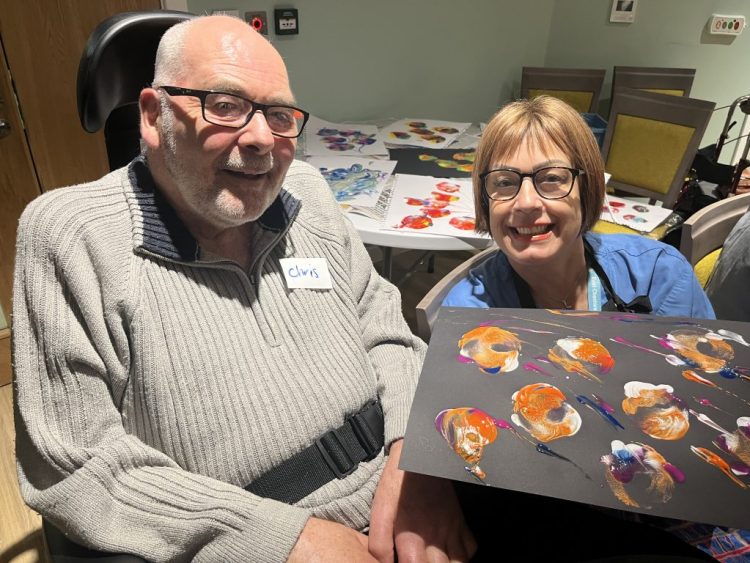The Healing Power of Storytelling
In the fabric of human experience, stories have always held power. From ancient cave paintings to modern memoirs, storytelling is more than an art form—it is a vital function of the human psyche. Today, science and therapy converge on a compelling truth: telling your story, especially in a structured, compassionate setting, can be one of the most transformative and healing acts available. This healing process is being increasingly formalized in modalities like narrative therapy and holistic coaching, which recognize the therapeutic potential embedded in self-expression. By integrating both approaches, individuals can tap into profound emotional resilience and reclaim agency over their mental and emotional health.
Understanding Narrative Therapy
Narrative therapy, developed by Michael White and David Epston in the 1980s, is a form of psychotherapy rooted in the belief that people are not problems—they face problems. This seemingly simple reframe shifts the therapeutic lens from pathology to possibility. Narrative therapists encourage clients to “externalize” issues, seeing them as separate from the self. This allows individuals to deconstruct limiting narratives—such as “I am broken” or “I always fail”—and replace them with empowering alternatives.
Central to narrative therapy is the idea that we all live by stories. These stories are shaped by our families, cultures, experiences, and interpretations. However, some of these narratives become rigid or toxic, trapping us in cycles of shame, blame, and fear. A therapist helps clients identify dominant narratives and uncover neglected, yet equally valid, sub-narratives that offer hope, strength, and insight. For example, someone who believes they are “unworthy of love” may rediscover forgotten experiences of nurturing relationships, thus rewriting the story of their relational self.
What Is Holistic Coaching?
Holistic coaching differs from traditional coaching in that it considers the entirety of a person—body, mind, emotions, and spirit. While narrative therapy delves into the psychological roots of suffering, holistic coaching supports forward momentum, guiding individuals to align with their values and life purpose. Holistic coaches often draw upon mindfulness, somatic awareness, energy work, and intuitive practices to help clients reach clarity and vitality. The coach does not prescribe solutions but facilitates the client’s own exploration and growth.
A key benefit of holistic coaching is that it doesn’t just aim for short-term fixes. It seeks to cultivate resilience—the capacity to remain centered and resourceful amid life’s challenges. When combined with narrative therapy, holistic coaching enables clients not only to understand the past but to redesign the future from a grounded, integrated sense of self.
The Neurobiology of Storytelling and Resilience
Neuroscience provides compelling evidence for why storytelling can be so therapeutic. Telling a story activates various regions of the brain, including the prefrontal cortex (decision-making), the hippocampus (memory), and the amygdala (emotion). When we narrate our experiences, especially in a safe and supportive environment, the act of naming emotions can reduce their intensity. This phenomenon is called “affect labeling,” and studies show it can downregulate the amygdala’s threat response, allowing the brain to process trauma more calmly.
Moreover, re-authoring one’s narrative strengthens the brain’s neuroplasticity—the ability to form new neural connections. This is crucial for resilience, as it allows individuals to move from reactive to reflective states. In this sense, each time a person retells their story with new insights or emotional clarity, they reinforce healthier patterns of thinking and feeling.
The Intersection of Narrative and Holistic Practice
While narrative therapy provides the scaffold for understanding and deconstructing old stories, holistic coaching builds the bridge to new ones. The integration of these two modalities offers a comprehensive approach to emotional healing and growth.
For instance, a client working through a story of chronic self-doubt may, through narrative therapy, uncover the origins of this belief in early family dynamics or social conditioning. In parallel, holistic coaching can help the client develop daily rituals, affirmations, or embodiment practices that affirm a new story of confidence and self-trust.
These combined practices don’t just heal the past—they energize the present and ignite the future. Clients often report increased emotional flexibility, spiritual connection, and a deepened sense of meaning in their lives. They move from being passive recipients of their histories to active authors of their destinies.
Creating a Safe Space for Storytelling
For storytelling to be therapeutic, the space in which it occurs must be safe, nonjudgmental, and empathetic. Whether working with a therapist or a coach, individuals need to feel seen, heard, and respected. Practitioners are trained to hold space with deep listening and attunement, inviting clients to explore both the shadows and the light of their narratives.
Ritual can enhance this process. Lighting a candle, using symbolic objects, or beginning sessions with grounding breaths can signal to the nervous system that this is sacred space. These small but significant acts can help clients drop into a deeper, more honest layer of self-reflection.
The Role of Language in Healing
Language is not just a tool for communication—it’s a medium for meaning. The words we use to describe our lives shape how we experience them. For example, describing a life event as a “failure” invokes very different emotions than calling it a “lesson” or “turning point.” Narrative therapy pays close attention to language, helping clients become aware of the metaphors, phrases, and labels that reinforce their struggles or strengths.
Similarly, holistic coaches may encourage clients to craft mantras or personal mission statements that encapsulate their evolving narratives. Language becomes both mirror and compass—a way to see oneself clearly and chart a new course.
Embodying the New Narrative
Storytelling alone isn’t enough; the body must believe the new story. That’s why integrating somatic practices is vital in this work. Trauma and emotional memory live in the body, and if healing stays in the realm of intellect, change will be limited.
Practices such as breathwork, yoga, guided visualization, or dance can help anchor new narratives in the body’s felt sense. Clients may be guided to notice where in the body certain stories reside—perhaps grief in the chest, or fear in the stomach—and then use movement or mindfulness to release, soothe, or energize these areas. Embodiment transforms story from abstract idea to lived reality.

Cultural and Collective Narratives
Narratives are not just personal—they are also cultural and collective. Societal messages about race, gender, sexuality, and success profoundly shape individual identities. Narrative therapy and holistic coaching both honor the impact of these broader systems, empowering clients to resist oppressive narratives and reclaim their truth.
For example, a woman who has internalized societal messages about being “too emotional” may, through this work, reframe her sensitivity as a superpower of empathy and intuition. A queer person navigating internalized shame may come to see their identity not as a deviation but as a gift of authenticity and courage.
By re-authoring cultural narratives, individuals not only heal personally—they contribute to collective liberation and social change.
Challenges and Ethical Considerations
While the integration of narrative therapy and holistic coaching holds great promise, it also demands sensitivity and ethical care. Practitioners must be well-trained, trauma-informed, and aware of the limits of their scope. Not all stories can be safely unpacked without professional mental health support. Coaches should refer clients to licensed therapists when deeper psychological wounds are present.
Moreover, there’s a risk of “toxic positivity” in some coaching spaces—where clients are encouraged to rewrite painful stories prematurely or without honoring grief. True healing requires honesty, nuance, and time. It’s not about spinning every experience into a success story, but rather embracing the full arc of the human journey.
Steps to Begin Your Own Story Healing Journey
If you’re inspired to explore storytelling as a path to healing, here are some steps to begin:
- Journaling: Start by writing about key moments in your life. What are the stories you tell yourself about these events? How do they make you feel?
- Naming Dominant Narratives: Identify the core beliefs that run through your stories. Are they empowering or limiting?
- Seeking Support: Consider working with a narrative therapist or holistic coach. Look for someone with credentials, experience, and a style that resonates with you.
- Ritualizing the Process: Create a personal ritual around your storytelling practice—light a candle, set an intention, use music or movement to support emotional flow.
- Sharing Wisely: Sharing your story with trusted others can be deeply affirming, but it’s important to choose your audience wisely. Not everyone has earned the right to hear your truth.
- Revisiting and Revising: Healing is not linear. Return to your stories often, adding new layers of understanding, compassion, and strength.
Conclusion: You Are the Author of Your Life
In a world that often feels chaotic and uncertain, the act of storytelling can ground us in meaning. When we combine the insight of narrative therapy with the integrative power of holistic coaching, we unlock a profound pathway to emotional resilience. We discover that our past does not define us—our response to it does. And we remember that healing isn’t about fixing what’s broken, but about reclaiming the wholeness that has always been within us.
Your story matters. Your voice matters. And when told with courage and care, your story may be the medicine you—and others—have been waiting for.











































